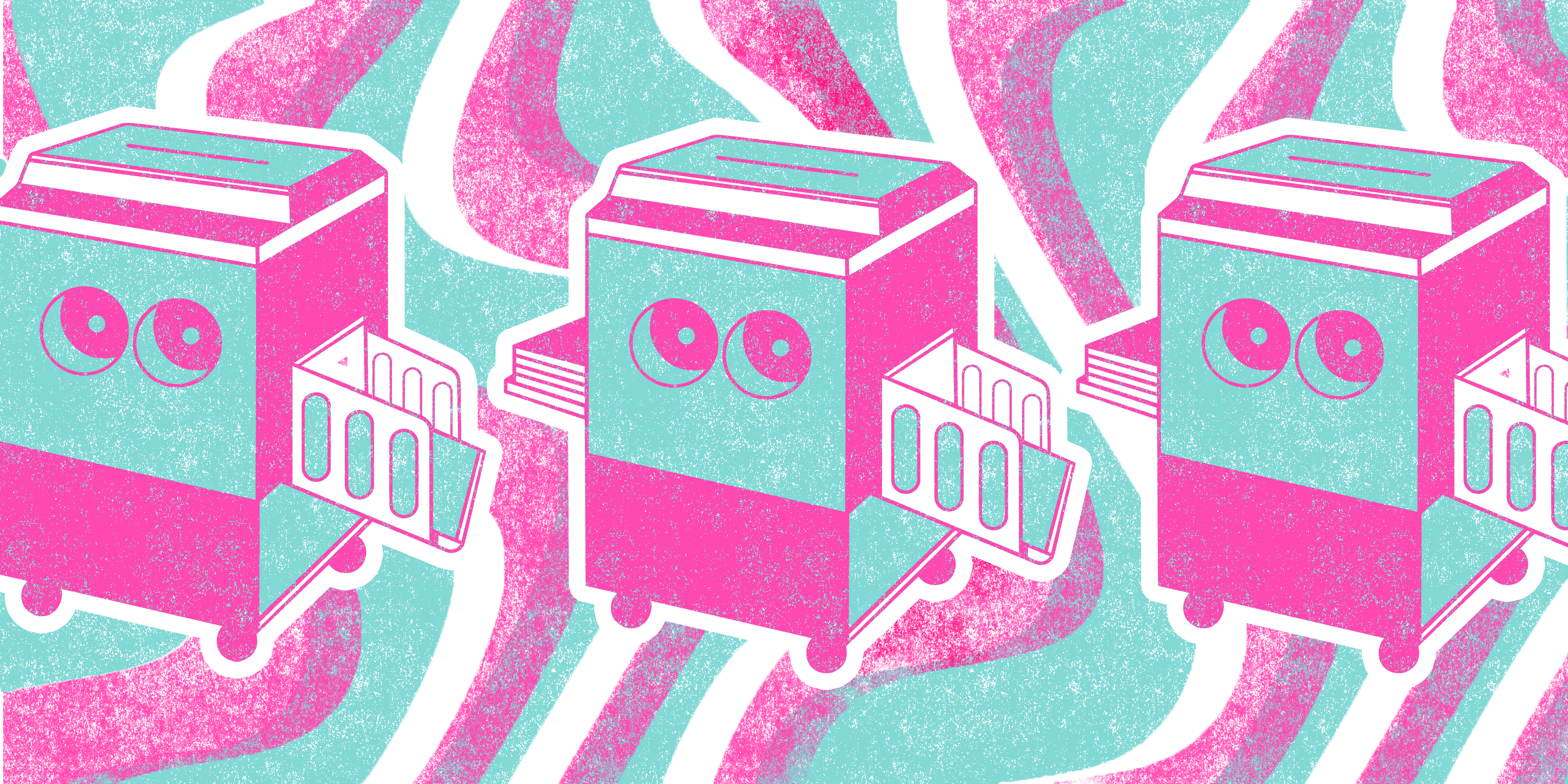Our cover was risograph printed, but you might find yourself asking—what does that really mean? Let us explain…
RISO printers create internal stencils that lie on an ink drum. The ink drum spins at high speeds with the stencil on it, and pushes ink out of the ink drum through the stencil onto the paper. Each print copy made through the risograph printing process is one-of-a-kind due to the ink drum’s rapid speed, making the process more unpredictable, resulting in unique textures print-to-print.
Risograph printing was designed to take advantage of spot colors. Spot colors are solid colors made with a specific premixed ink and are usually based on colors from the Pantone Matching System (PMS). Pantone colors are standardized, each with an assigned name and number, in order to make it easier to use and print on a global level.
Unlike digital printing, there is no standard option to print in ink colors like CMYK* because there are only two ink drums in the printer (meaning there are only two colors rather than four). Spot color makes the process of going from computer to printer easier and cheaper for printing, and it offers creative liberty for mixing colors by overlapping them within a design.
Although RISO printers only have two ink drums, this does not limit your print to only two colors. If you want a wider variety of colors, you can run the print through the machine multiple times to overlay new colors onto your design.
The RISO printer is a much more affordable option than traditional screen or offset printing methods. This is because the emulsion ink used for risograph printing is cheaper to produce, and there is no heat involved in the printing process.
* CMYK: The four ink plates used in certain color printing processes — cyan, magenta, yellow and key (black)
The artist behind our cover — Annie Gidionsen
At the beginning of the winter quarter, I was introduced to risograph printing by DePaul associate professor Jessica Larva. The Art School at DePaul has a risograph printer, and after learning how to work it, I came up with the idea to use it for the fashion issue. Art and fashion go hand in hand, so I thought having a print issue with all risograph-style headers would be a bold choice that would make our fashion issue absolutely spectacular.

Header Illustration by Annie Gidionsen




NO COMMENT